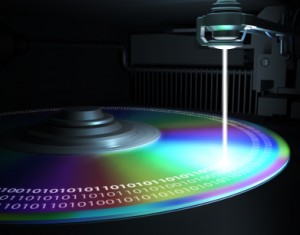 It’s 2011 and little is being done for this planet on which we live! Remember the ‘green’ revolution that started before the financial crisis? And as the situation seems now, it looks as though little, or indeed nothing has really been done in the DVD business.
It’s 2011 and little is being done for this planet on which we live! Remember the ‘green’ revolution that started before the financial crisis? And as the situation seems now, it looks as though little, or indeed nothing has really been done in the DVD business.
Well, maybe that’s not quite true! There have been a few companies out there who have invented new technologies and products like the EcoDisc a carbon light DVD and FSC paper. However little has been done to implement these and other technologies on a large scale.
On a more positive note, the DVD/Blu-Ray industry has managed to go a little greener. A few years ago, in the US, Walmart asked one of its DVD suppliers — 20th Century Fox — to be a part of a pilot for a carbon reduction project. They made simple changes to make DVD packaging lighter, which in effect cut energy use by 28%. This reduced the lifecycle carbon emissions of these DVDs by about 25,000 tons. It had a big multiplier effect, too, because the lighter packages were also used on DVDs sold at stores other than Walmart. The change also evolved from movies to video games and software too. Small change — big cumulative effect.
The environmental impact of the manufacturing industry is not only down to the big companies.
When choosing CD/DVD/Blue-ray duplication, consider the environment. The least negative impact your final product or promotional material has the greater support you offer the environment. When and where possible use the least amount of packaging. Ask yourself does the disc need to be in a plastic box or will a cardboard wallet as offer by companies such as Duplication Centre be a better eco-friendly option. Not only does it take up less space, it uses fewer resources to produce and transport and can naturally biodegrade when no longer needed, meaning less to go in land fill.
The environmental impact CD/DVD/Blue-ray duplication has is in all our hands. There are many things businesses small and large can do and if put in place wisely, will further help reduce the carbon footprint (considerably). Let’s remember it’s all cumulative.
Archive for September, 2011
Going Greener?
Monday, September 12th, 2011Dual Layer DVD Recording
Monday, September 12th, 2011 Have you ever wondered how a full length feature movie plus bonus material fits onto a single DVD Disc? The answer is dual layer DVD technology and you may be surprised to know that this is not new technology we are talking about. Hollywood has been producing major motions pictures on stamped dual layer DVD Discs for years.
Have you ever wondered how a full length feature movie plus bonus material fits onto a single DVD Disc? The answer is dual layer DVD technology and you may be surprised to know that this is not new technology we are talking about. Hollywood has been producing major motions pictures on stamped dual layer DVD Discs for years.
We are now witnessing the rise of recordable dual layer DVD technology on the consumer market. A look at the technology could explain this progression.
Dual layer or double layer DVD, also referred to as a DVD-9 disc, appears to be a natural progression of single layer 4.7GB recordable technology. For starters a DVD-9 disc offers up to four hours of high quality MPEG-2 video, or up to 8.5GB of data on a single-sided disc. This mean you can pack up to 12 CD’s worth of information on to one disc. Thanks to the additional layer of recordable space you can store approximately 2,000 songs in MP3 format or up to 17,000 high quality JPEG images.
In a dual layer DVD-9 disc, two individual recordable layers, like the one found on a standard single/ DVD-5 disc, are joined together with a transparent spacer and a thin metal reflector between the two. The bottom layer is written and read in exactly the same manner as a standard DVD-5. The difference with a DVD-9 is that the laser now focuses a fraction of a millimetre beyond the first recording layer, giving access to the second recordable layer. A downside to this is that the layer change can display a noticeable pause in some DVD players, up to several seconds.
Certainly business users will appreciate the increased storage capacity of a dual layer DVD recordable disc especially when distributing a large amount of data on a single disc is needed. It can even be used for desktop system backup and single server backup with time and cost savings over older traditional technologies. IT managers can even create their system “images” for configuring client PCs on a single disc for rapid deployment of new computers on corporate networks.
Independent filmmakers and studios alike will appreciate the ability to author a dual layer DVD video disc and try it out without resorting to expensive and time consuming replication. This set of users can now fine tune their works on cost effective dual layer DVD recordable discs before creating the master for replication.
Dual layer discs are not as common, as the single layer format as the 4.7GB capacity of the single layer discs is usually sufficient for most business uses and dual layer discs are also a lot more expensive. Also the question of compatible software arises. Typically only newer DVD recorder drives will be able to write to dual layer or double layer discs. Many current DVD recorders support dual-layer technology, and the price is now comparable to that of single-layer drives, though the discs remain more expensive. However, the recording speeds reached by dual-layer media are still well below those of single-layer media.